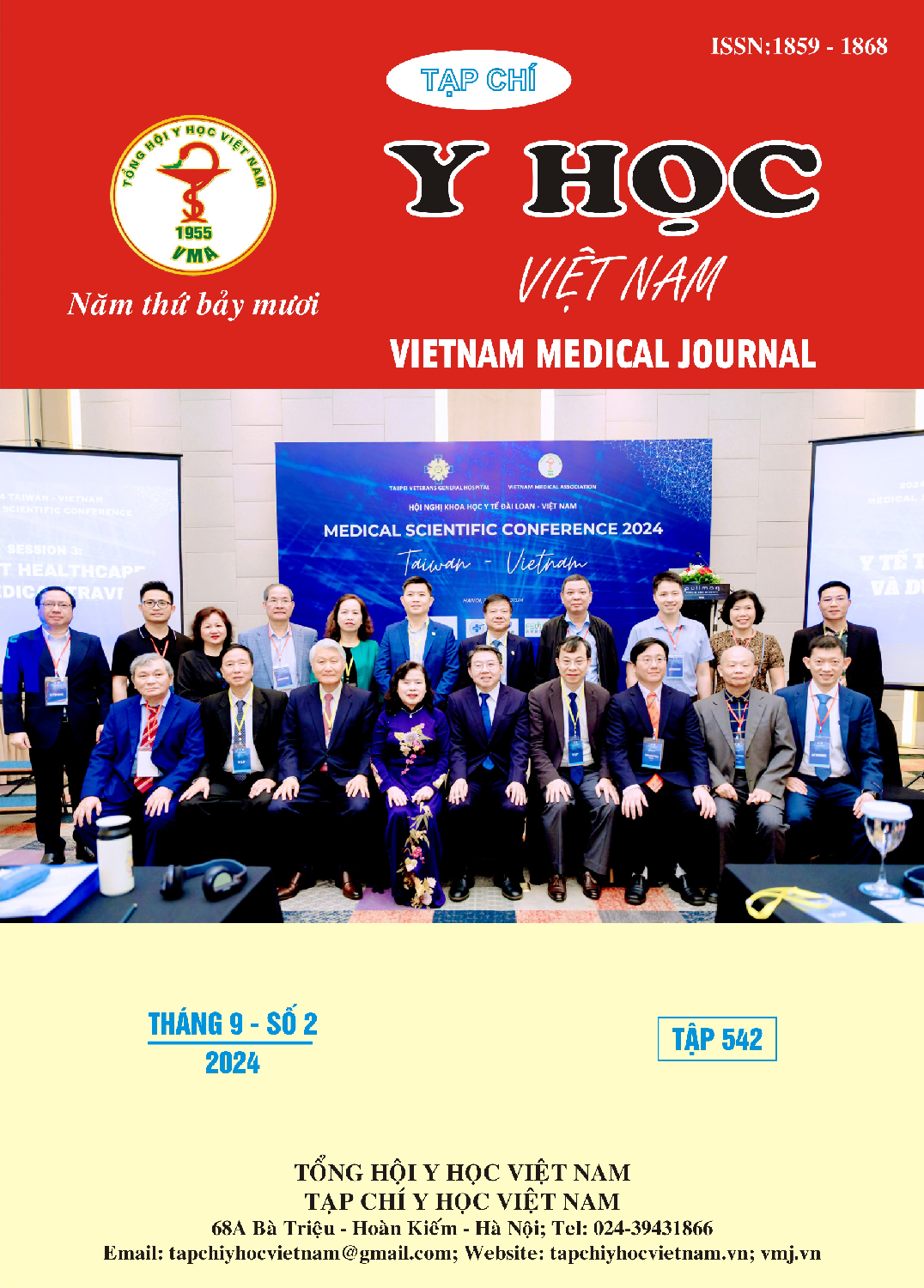DIABETIC DISTAL SYMMETRIC POLYNEUROPATHY AND THE DIAGNOSTIC VALUE OF TIMED VIBRATION SENSE
Main Article Content
Abstract
Objective: To investigate the diagnostic value of timed vibration sense (TVS) using a 128 Hz tuning fork in DSPN patients with diabetes. Subjects and methods: 80 diabetic patients with DSPN and 80 diabetic patients without DSPN at Hanoi Medical University Hospital were evaluated for TVS and analyzed for relationships with clinical characteristics. Results: The mean age of the DSPN and non-DSPN groups was 61.10 and 57.59, respectively (p < 0.05). For patients under 60 years old TVS < 8 seconds has sensitivity and specificity with DSPN of 68.4% and 97.9%, respectively, while for patients aged 60 years old or older, TVS < 5 seconds has sensitivity and specificity of 66.7% and 75.0%, respectively. Conclusion: Quantitative TVS examination is a fast, convenient and more sensitive technique than qualitative methods in diagnosing DSPN. Therefore, it is necessary to apply it to clinical examination practice for early detection, contributing to improving the quality of life of patients.
Article Details
Keywords
Symmetric polyradiculopathy, diabetes mellitus, vibration sensation time.
References
2. Alleman CJ, Westerhout KY, Hensen M, et al. Humanistic and economic burden of painful diabetic peripheral neuropathy in Europe: a review of the literature. Diabetes research and clinical practice. 2015;109(2):215-225.
3. Albers JW, Pop-Busui R. Diabetic Neuropathy: Mechanisms, Emerging Treatments, and Subtypes. Current Neurology and Neuroscience Reports. 2014;14(8).
4. Young MJ, Boulton AJM, Macleod AF, Williams DRR, Sonksen PH. A multicentre study of the prevalence of diabetic peripheral neuropathy in the United Kingdom hospital clinic population. Diabetologia. 1993;36(2):150-154.
5. Ziegler D, Papanas N, Schnell O, et al. Current concepts in the management of diabetic polyneuropathy. Journal of Diabetes Investigation. 2021;12(4):464-475.
6. Bakker K, Apelqvist J, Schaper NC. Practical guidelines on the management and prevention of the diabetic foot 2011. Diabetes/Metabolism Research and Reviews. 2012;28:225-231.
7. Olaleye D, Perkins BA, Bril V. Evaluation of three screening tests and a risk assessment model for diagnosing peripheral neuropathy in the diabetes clinic. Diabetes Research and Clinical Practice. 2001;54(2):115-128.
8. England JD, Gronseth GS, Franklin G, et al. Distal symmetric polyneuropathy: A definition for clinical research: Report of the American Academy of Neurology, the American Association of Electrodiagnostic Medicine, and the American Academy of Physical Medicine and Rehabilitation. Neurology. 2005;64(2):199-207.
9. Alanazy MH, Alfurayh NA, Almweisheer SN, Aljafen NB, Muayqil T. The conventional tuning fork as a quantitative tool for vibration threshold. Muscle Nerve. 2018;57(1):49-53.
10. Oyer DS, Saxon D, Shah A. Quantitative assessment of diabetic peripheral neuropathy with use of the clanging tuning fork test. Endocrine Practice. 2007;13(1):5-10.


